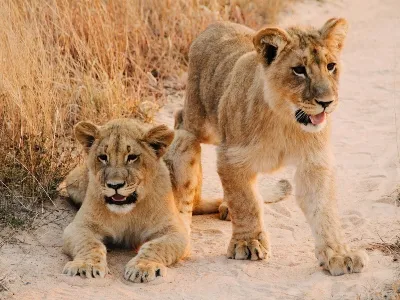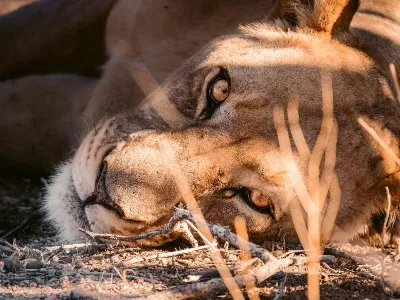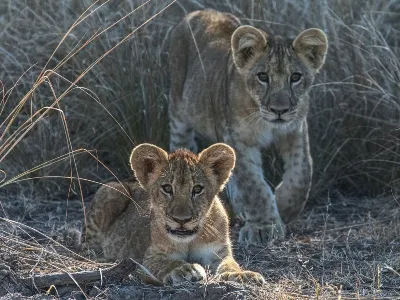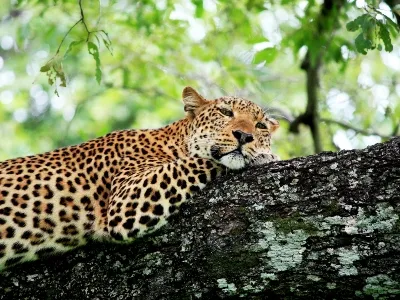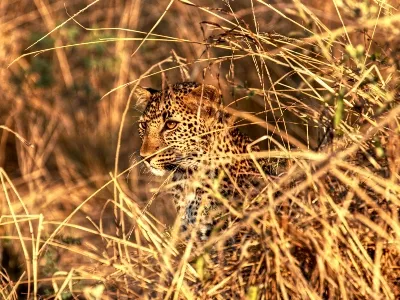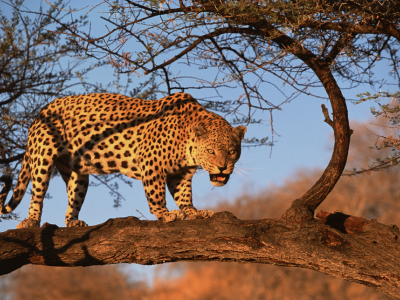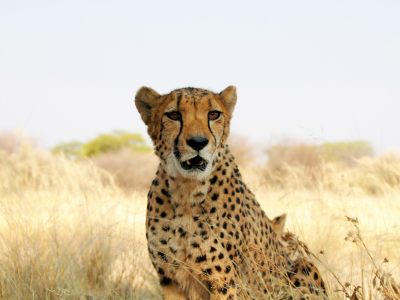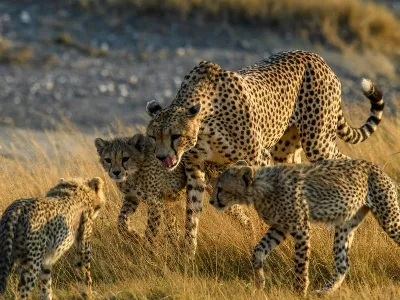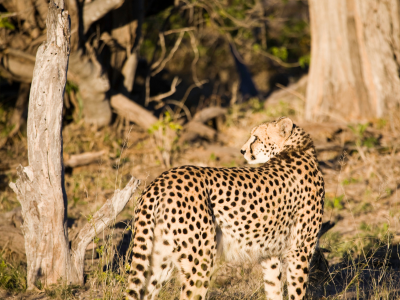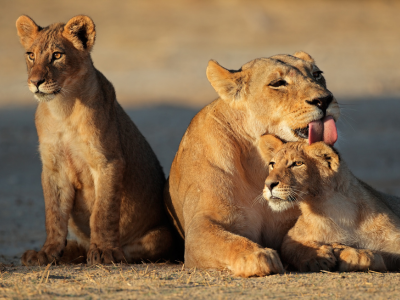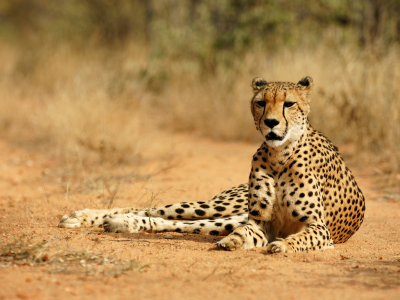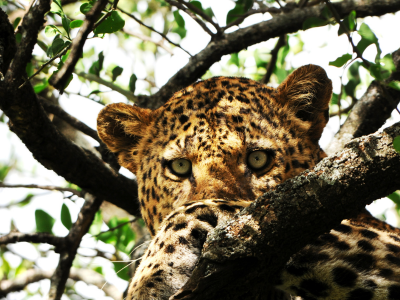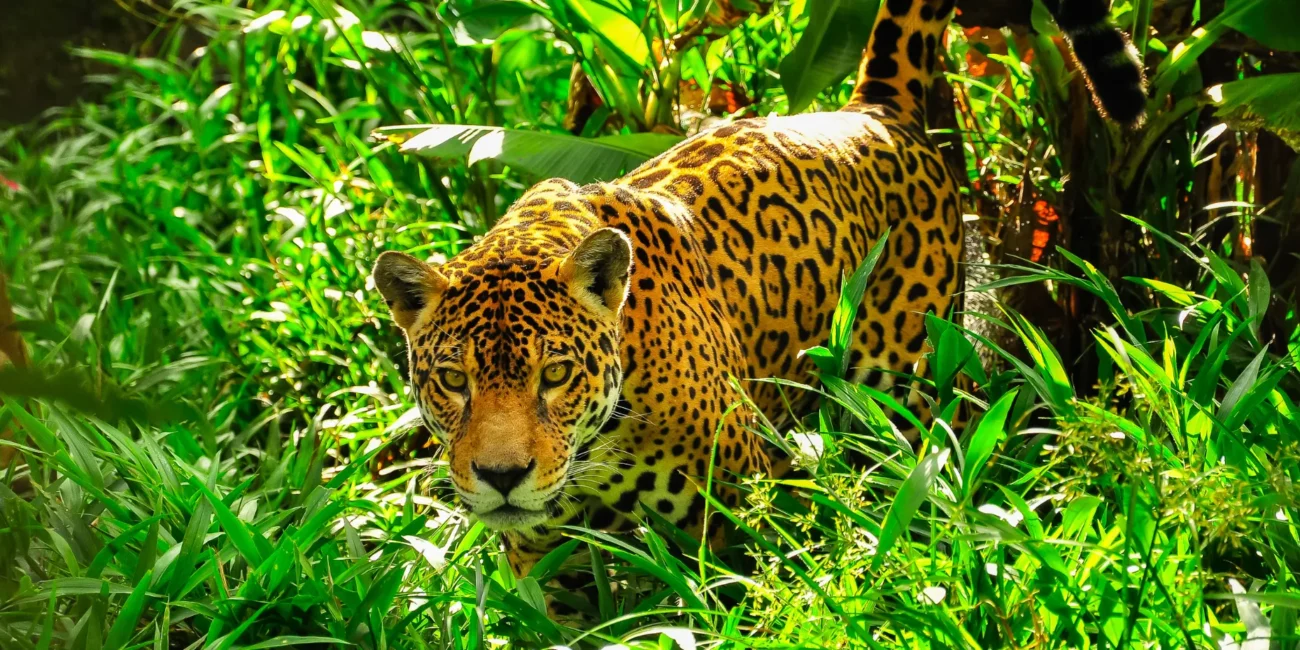One of Africa’s biggest draws is inarguably the unique opportunity to witness the powerful presence and majestic ferocity of its big cats. Home to three of the world’s five big cat species – the lion, leopard and cheetah – Africa is a place that continues to enthral even the most experienced wildlife watchers. When it comes to observing these incredible creatures, there is no better way to do so than a luxury safari tour out on the sprawling African plains.
Sadly, while big cats are often considered to epitomise the spirit of Africa, over the decades their numbers have fallen drastically, and a fight to keep them around for future generations is high on the agenda of the African nations that these cats call home. Here is our expert guide to these awe-inspiring felines, where you are most likely to find them along with what is being done to protect them from further decline.
The Three Big Cats in Africa
Lion
The king of the jungle, lions are the largest and most famous of the big cats found in Africa. Although most at home out in the grasslands and savannah rather than dense jungles, as its moniker would suggest, the lion is a true symbol of the continent.
Lions are the only big cat species to live in a family unit, famously known as prides, and can be seen parading across the African plains in groups as large as 40 members. As apex predators they sit at the very top of the food chain, helping to keep the large numbers of prey animal species in check and the ecosystems in which they rule in harmonious balance.
Once freely roaming the breath of the African continent, there are now estimated to be around 20,000 left in the wild. Populations are mostly concentrated in a select few nations, including Tanzania, South Africa, Kenya and Zimbabwe.
African Leopard
The African leopard lives in a wide range of habitats, from mountains and forests to grasslands and savannah. This African big cat is mostly nocturnal, primarily hunting and feeding under the cover of darkness, making it one of the most highly prized animals to spot while on African big cats safaris.
Its distinctive coat of golden fur and black spotted rosettes makes it a true sight to behold and a firm favourite for avid wildlife enthusiasts. Preferring to live in solitude, the African leopard is an exceptionally strong climber and will commonly be found lounging at the highest of treetops to protect both itself and its prey from predators.
Highly adaptable creatures, they can be found all over Africa, from the lush jungles of Western Africa to the savannah of the Eastern and Southern reaches of the continent, in places such as Zambia, Kenya and Botswana.
Cheetah
The fastest land animal on earth, cheetahs have the ability to reach incredible running speeds of up to 120 kph. These agile creatures are the only big cat in the world that cannot roar, instead preferring to purr, chirp and growl.
Their superior speed allows them to strike prey in an instant and is why they are one of the most successful hunters of all the big cats in Africa. Their slight stature often makes them more difficult to spot, however cheetahs can be found throughout Sub-Saharan Africa with the healthiest populations found in Namibia and South Africa.
Best places to see big cats in Africa
The best way to get up close and personal with these big cats is through a grand safari getaway. African safari tours offer an unrivalled glimpse into the lives of African big cats and are the only way to experience their true beauty and intimidating presence. Meanwhile, for those looking to get even closer to these fascinating creatures, a walking safari offers an even more immersive experience.
For an epic big cat experience, look no further than a luxury Zimbabwe safari. Hwange National Park is the country’s largest nature reserve where you will be treated to an array of wildlife encounters, including close encounters with all of Africa’s big cats. Watch as lions laze by the waterhole in the heat of the day or spot cheetahs on their way to hunt on the plains as the evening draws in.
For those looking for a chance to see an african leopard in all its glory then an escape to Zambia’s South Luangwa and Lower Zambezi is sure to fit the bill. Known as the ‘Valley of the Leopard’, South Luangwa National Park invites you to see the notoriously shy big cat relaxing in the trees and padding around the brush on the lookout for prey, even in broad daylight.
A walking safari following the legendary Serengeti migration is an unmissable experience, where you are taken into the very heart of big cat territory and see the circle of life in full effect. You will walk alongside the millions of wildebeest and zebra as they make the notoriously arduous journey across the East African savannah, attracting a range of predators as they traverse the plains.
Why are big cat populations on the decline?
Loss of habitat and prey are the biggest threats to big cat populations throughout Africa, with deforestation and agriculture being the leading causes. Many big cats are also under threat from human conflict, killed to protect livestock or in retribution killings.
Poaching is a serious threat, with the fur, bones and other body parts of African big cats all fetching large sums on the black market. With illegal wildlife trade becoming one of the world’s largest criminal activities, worth over 20 billion US dollars, protecting the continent’s big cats is an ongoing battle.
But the tireless efforts of both governments, community groups and volunteers has gone a long way in saving these cats from becoming endangered.
Africa Big Cat Conservation Efforts
Big cats are big business in Africa, with wildlife tourism generating over $200 US dollars for the region every year. Many local communities depend on big cat tourism for their livelihoods, so their conservation is not only important for the animals themselves but for Africa as a whole.
Big game reserves and conservation areas make up over 19% of Africa’s landmass and are the cornerstone of Africa big cat conservation. Many of these areas are state or government funded with the help of private companies and NGO helping to manage them.
South Africa has over 1,500 protected areas of land helping to bolster the big cat populations across the region, along with the other native wildlife that calls these areas home. Patrols in protected areas help stave off illegal hunting, protecting both the big cats and their prey from human threats. This helps in increasing their range and allowing them to live in nature at peace, as they should.
Why Journeys With Purpose
We offer immersive conservation and ethical travel experiences across the globe through private and hosted trips with pioneering conservationists. Our journeys act as a catalyst for changemakers in the world’s last wild places and the people and projects that fight to preserve them. Get in touch to begin planning your journey with purpose.
